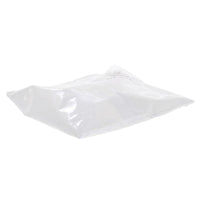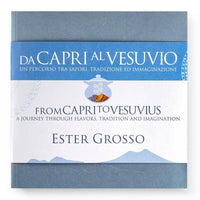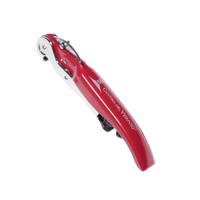The Lowdown on Wine Sediment - Part 1
May 02, 2023
This week, we’ve got a great topic for wine lovers – so great and informative, we’ve decided to provide it in two parts! Read on for Part 1 of The Lowdown on Wine Sediment.
The Lowdown on Wine Sediment: Part 1
Introduction
You’ve swirled your glass of wine, taken in its aromas, and are enjoying your first sip when you suddenly notice weird crystal-like particles at the bottom of your glass.
It’s OK! You can keep enjoying your wine! The wine-speak name for what you see is “sediment” and it’s perfectly natural and harmless.
In fact, sediment is often a sign of superior winemaking. Organic wine, like our range at Cantina del Vesuvio, contains small traces of sediment. So does much top-tier aged wine from around the world and wine that’s undergone specific quality-enhancing processes in the winery.
Sediment is a fascinating and integral part of the winemaking process. So why not pour yourself a glass of wine to savor while we do a mini-deep dive into these enigmatic formations? You’ll be amazed at what they reveal about the wine you're sipping!
What exactly is wine sediment?
Wine sediment is also known as dregs, wine crystals, or wine diamonds (sounds so pretty hey?). It might not be that appetizing to look at, but it’s 100% natural and safe, even if you accidentally swallow some. This isn’t likely because sediment does what it always does. It settles and will stay at the bottom of your bottle or glass safely out of the way of your next sip.
Before we look at what wine sediment is, let’s make clear what it isn’t: the presence of wine sediment isn’t an indication that a bottle of wine has gone bad.
So, what is wine sediment?
Grape material
Firstly, it’s likely that the sediment at the bottom of your glass is caused by grape skins and seeds. This is more common in red wines where the grape skins and seeds stay in contact with the grape juice during the fermentation process. They might eventually find their way into the bottle.
Yeasts
Yeasts are also necessary to make wine since they transform the grapes' sugars into alcohol. The sediment in the bottom of your bottle might also contain dead yeast cells (called lees) that stay in the wine after the fermentation process has been completed.
Tartrates
These tiny fragments are the final culprit that causes sediments in wine. These crystal-resembling substances appear when tartaric acid and potassium, both of which are natural byproducts of winemaking, interact in cold conditions. This means that you might buy a bottle that looks sediment free but after storing it in the fridge dregs might appear. These kinds of crystals are more common in white wines which are usually refrigerated.

What does sediment tell us about the wine?
While sediment isn’t in itself an indication of the wine’s quality (although it usually is connected to the best vinification practices) it can give us some clues about the winemaking process and the wine’s age.As we mentioned above, sediment can come from grape skins and seeds, spent yeasts, and tartrates. There is a way of stopping its formation though through a winery process known as “stabilizing”.
Here’s the lowdown:
- Stabilizing means storing the wine in almost freezing temperatures for two to three weeks so that tartrates can be formed and then removed
- This is done by a process called “fining”
- Fining a wine means using additives like egg white, clay, or gelatin, which stick to floating sediment
- This makes them heavy enough to fall to the bottom of the tank
- The winemaker removes this sediment and the fined and stabilized wines are bottled
If a winemaker decides not to stabilize, fine, or filter a wine, gravity will force these particles to slowly settle to the bottom of the bottle as the wine ages. Wines with dregs are hence likely to be aged, low-intervention, or, like Cantina del Vesuvio’s, organic.
Many winemakers adamantly avoid or implement minimal fining. This is because techniques for "cleaning" the wine can alter precious flavors and aromas robbing a wine of the unique profile that comes from the grape, terroir, and winemaking.
How does fining do this? Fining agents can dilute a wine's color and soften its appealing astringency. Furthermore, cold stabilization can reduce a wine's acidity and dilute its flavor. As a result, wines produced using these methods often have a simple, generic character.
That’s it for this week! Next time in Part 2 of The Lowdown on Wine Sediment, we look at the practice of fining in the winery and how it impacts a wine’s character.




